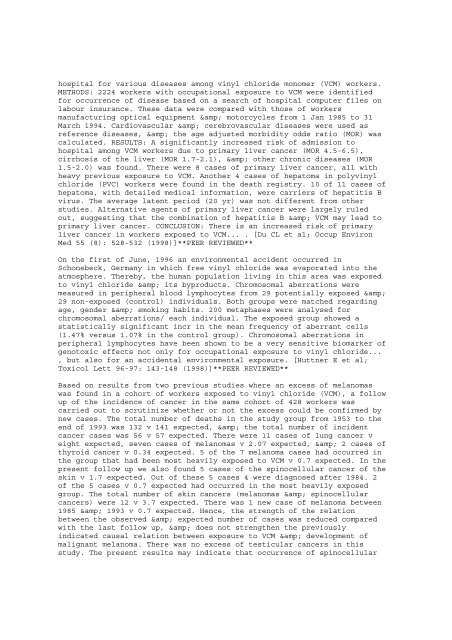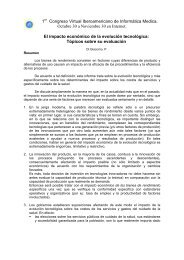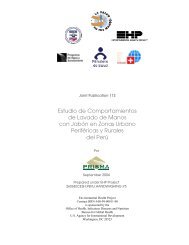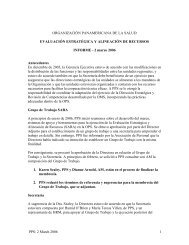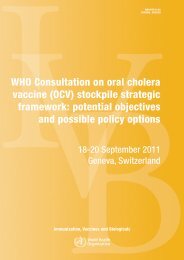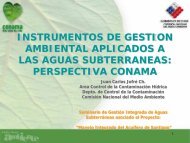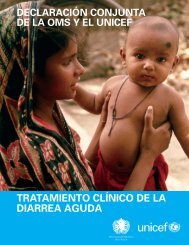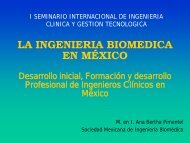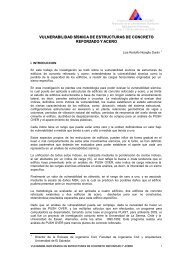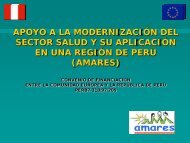a database of the National Library of M
a database of the National Library of M
a database of the National Library of M
Create successful ePaper yourself
Turn your PDF publications into a flip-book with our unique Google optimized e-Paper software.
hospital for various diseases among vinyl chloride monomer (VCM) workers.METHODS: 2224 workers with occupational exposure to VCM were identifiedfor occurrence <strong>of</strong> disease based on a search <strong>of</strong> hospital computer files onlabour insurance. These data were compared with those <strong>of</strong> workersmanufacturing optical equipment & motorcycles from 1 Jan 1985 to 31March 1994. Cardiovascular & cerebrovascular diseases were used asreference diseases, & <strong>the</strong> age adjusted morbidity odds ratio (MOR) wascalculated. RESULTS: A significantly increased risk <strong>of</strong> admission tohospital among VCM workers due to primary liver cancer (MOR 4.5-6.5),cirrhosis <strong>of</strong> <strong>the</strong> liver (MOR 1.7-2.1), & o<strong>the</strong>r chronic diseases (MOR1.5-2.0) was found. There were 8 cases <strong>of</strong> primary liver cancer, all withheavy previous exposure to VCM. Ano<strong>the</strong>r 4 cases <strong>of</strong> hepatoma in polyvinylchloride (PVC) workers were found in <strong>the</strong> death registry. 10 <strong>of</strong> 11 cases <strong>of</strong>hepatoma, with detailed medical information, were carriers <strong>of</strong> hepatitis Bvirus. The average latent period (20 yr) was not different from o<strong>the</strong>rstudies. Alternative agents <strong>of</strong> primary liver cancer were largely ruledout, suggesting that <strong>the</strong> combination <strong>of</strong> hepatitis B & VCM may lead toprimary liver cancer. CONCLUSION: There is an increased risk <strong>of</strong> primaryliver cancer in workers exposed to VCM... . [Du CL et al; Occup EnvironMed 55 (8): 528-532 (1998)]**PEER REVIEWED**On <strong>the</strong> first <strong>of</strong> June, 1996 an environmental accident occurred inSchonebeck, Germany in which free vinyl chloride was evaporated into <strong>the</strong>atmosphere. Thereby, <strong>the</strong> human population living in this area was exposedto vinyl chloride & its byproducts. Chromosomal aberrations weremeasured in peripheral blood lymphocytes from 29 potentially exposed &29 non-exposed (control) individuals. Both groups were matched regardingage, gender & smoking habits. 200 metaphases were analysed forchromosomal aberrations/ each individual. The exposed group showed astatistically significant incr in <strong>the</strong> mean frequency <strong>of</strong> aberrant cells(1.47% versus 1.07% in <strong>the</strong> control group). Chromosomal aberrations inperipheral lymphocytes have been shown to be a very sensitive biomarker <strong>of</strong>genotoxic effects not only for occupational exposure to vinyl chloride..., but also for an accidental environmental exposure. [Huttner E et al;Toxicol Lett 96-97: 143-148 (1998)]**PEER REVIEWED**Based on results from two previous studies where an excess <strong>of</strong> melanomaswas found in a cohort <strong>of</strong> workers exposed to vinyl chloride (VCM), a followup <strong>of</strong> <strong>the</strong> incidence <strong>of</strong> cancer in <strong>the</strong> same cohort <strong>of</strong> 428 workers wascarried out to scrutinize whe<strong>the</strong>r or not <strong>the</strong> excess could be confirmed bynew cases. The total number <strong>of</strong> deaths in <strong>the</strong> study group from 1953 to <strong>the</strong>end <strong>of</strong> 1993 was 132 v 141 expected, & <strong>the</strong> total number <strong>of</strong> incidentcancer cases was 56 v 57 expected. There were 11 cases <strong>of</strong> lung cancer veight expected, seven cases <strong>of</strong> melanomas v 2.07 expected, & 2 cases <strong>of</strong>thyroid cancer v 0.34 expected. 5 <strong>of</strong> <strong>the</strong> 7 melanoma cases had occurred in<strong>the</strong> group that had been most heavily exposed to VCM v 0.7 expected. In <strong>the</strong>present follow up we also found 5 cases <strong>of</strong> <strong>the</strong> spinocellular cancer <strong>of</strong> <strong>the</strong>skin v 1.7 expected. Out <strong>of</strong> <strong>the</strong>se 5 cases 4 were diagnosed after 1984. 2<strong>of</strong> <strong>the</strong> 5 cases v 0.7 expected had occurred in <strong>the</strong> most heavily exposedgroup. The total number <strong>of</strong> skin cancers (melanomas & spinocellularcancers) were 12 v 3.7 expected. There was 1 new case <strong>of</strong> melanoma between1985 & 1993 v 0.7 expected. Hence, <strong>the</strong> strength <strong>of</strong> <strong>the</strong> relationbetween <strong>the</strong> observed & expected number <strong>of</strong> cases was reduced comparedwith <strong>the</strong> last follow up, & does not streng<strong>the</strong>n <strong>the</strong> previouslyindicated causal relation between exposure to VCM & development <strong>of</strong>malignant melanoma. There was no excess <strong>of</strong> testicular cancers in thisstudy. The present results may indicate that occurrence <strong>of</strong> spinocellular


